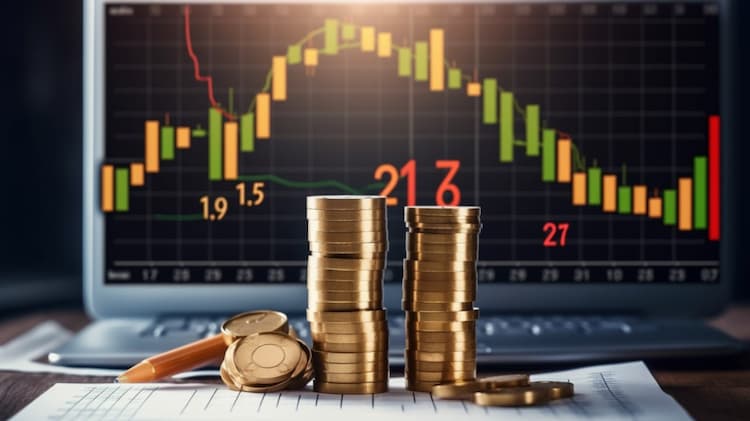DBEM ISSUER
The Deutsche X-trackers MSCI Emerging Markets Hedged Equity ETF (DBEM) is offered by Deutsche Asset Management. This ETF employs a passive indexing investment strategy to track the performance of the MSCI Emerging Markets US Dollar Hedged Index, designed to capture the performance of emerging market equities while mitigating exposure to fluctuations between the value of the U.S. dollar and the currencies of the countries included in the index. Deutsche Asset Management aims to provide investors with an efficient way to gain exposure to emerging markets while managing currency risk through the use of hedging strategies. As of July 31, 2022, the ETF's underlying index consisted of securities from various emerging market countries, with a significant allocation to China, and it aims to maintain a diversified portfolio while following the index's rebalance schedule.
DBEM DIVIDEND
The Xtrackers MSCI Emerging Markets Hedged Equity ETF (DBEM) offers investors exposure to emerging market equities while also implementing a currency-hedging strategy. While dividend income may not be the primary focus of this ETF, it still benefits from dividend distributions made by the underlying companies within the MSCI Emerging Markets Index. Dividends from these companies are typically distributed on varying schedules, depending on the individual dividend policies of the constituent firms. Investors considering DBEM can expect potential capital appreciation from emerging market growth along with the possibility of receiving dividend income as a result of these distributions.
DBEM TRACKING
Tracking the MSCI Emerging Markets ex-U.S. Index is the primary objective of the Alternative Sources DBEM ETF. This fund employs a passive investment approach to mimic the performance of the underlying index. The MSCI Emerging Markets ex-U.S. Index is designed to monitor emerging market performance while mitigating exposure to fluctuations between the U.S. dollar and the currencies of the countries included in the index. The ETF utilizes a full replication indexing strategy, meaning it directly invests in the component securities of the MSCI Emerging Markets ex-U.S. Index in the same weightings as they appear in the index. However, in certain situations where acquiring all component securities is not feasible, the fund may resort to a representative sampling strategy, selecting securities that collectively have characteristics similar to the underlying index. As of July 31, 2022, the MSCI Emerging Markets ex-U.S. Index included 1,380 securities, with an average market capitalization of approximately $4.69 billion and a minimum market capitalization of about $124.3 million. These securities were from various countries, including Brazil, Chile, China, Colombia, Czech Republic, Egypt, Greece, Hungary, India, Indonesia, Kuwait, Malaysia, Mexico, Peru, Philippines, Poland, Qatar, Saudi Arabia, South Africa, South Korea, Taiwan, Thailand, Turkey, and the United Arab Emirates. The index typically rebalances on a monthly basis, and the fund follows suit. The Alternative Sources DBEM ETF mainly concentrates its investments in emerging market countries and sectors corresponding to its underlying index. As of July 31, 2022, the index had significant exposure to China in particular, making up 32.04% of its composition. The fund may become non-diversified under certain circumstances, but shareholder approval is not required for such status changes. The fund employs various derivatives, including forward currency contracts, futures contracts, options on futures contracts, and other derivatives, primarily for hedging purposes, to align its performance with the underlying index. Additionally, the fund engages in securities lending, allowing brokers and financial institutions to borrow its portfolio securities, provided that they provide collateral equal to at least 102% of the borrowed securities' value. This collateral is regularly marked to market, and the fund may lend up to 33 1/3% of its total assets. It's important to note that this fund is not sponsored or endorsed by MSCI, and MSCI assumes no liability for the fund or its securities.
DBEM SECTOR
The Xtrackers MSCI Emerging Markets Hedged Equity ETF (DBEM) focuses on tracking the performance of the MSCI Emerging Markets 100% Hedged to USD Index. This index is designed to capture the performance of emerging market equities while mitigating exposure to fluctuations between the value of the US dollar and the currencies of the countries included in the index. DBEM employs a full replication indexing strategy, investing directly in the component securities of the index. As of July 31, 2022, the index included 1,380 securities, with significant weightings in countries like China (32.04%). The fund also has notable sector concentrations, with a significant percentage of the index comprised of issuers in the financials (21.50%) and information technology (20.07%) sectors, making it an attractive choice for investors seeking exposure to emerging markets with currency hedging.
DBEM EXPOSURE
The Deutsche X-trackers MSCI Emerging Markets Hedged Equity ETF (DBEM) offers exposure to emerging markets while mitigating currency risk. This ETF seeks to track the performance of the MSCI Emerging Markets US Dollar Hedged Index, providing investors with exposure to emerging market equities while hedging against currency fluctuations. DBEM's exposure encompasses a wide range of emerging market regions and sectors, offering diversification and the potential for growth in these dynamic economies.For more detailed information about DBEM's exposure, including specific regions, sectors, and correlations, you can use our tool, ETF Insider. With its web app and visualization tools, ETF Insider provides in-depth and interesting data on various US ETFs, helping you discover the nuances of their exposure, identify overlaps, and understand correlations, among other valuable insights.



